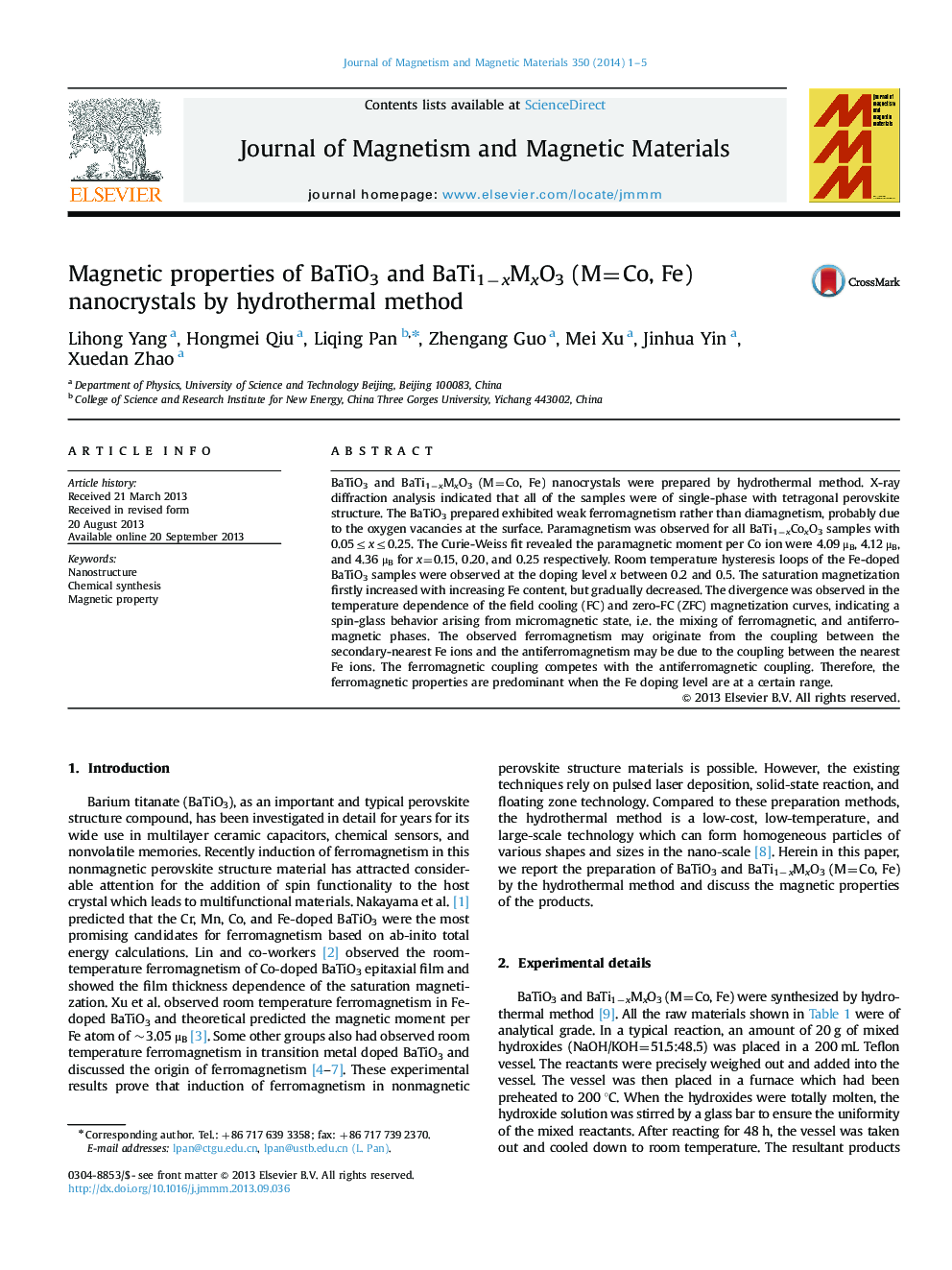| Article ID | Journal | Published Year | Pages | File Type |
|---|---|---|---|---|
| 8157539 | Journal of Magnetism and Magnetic Materials | 2014 | 5 Pages |
Abstract
BaTiO3 and BaTi1âxMxO3 (M=Co, Fe) nanocrystals were prepared by hydrothermal method. X-ray diffraction analysis indicated that all of the samples were of single-phase with tetragonal perovskite structure. The BaTiO3 prepared exhibited weak ferromagnetism rather than diamagnetism, probably due to the oxygen vacancies at the surface. Paramagnetism was observed for all BaTi1âxCoxO3 samples with 0.05â¤xâ¤0.25. The Curie-Weiss fit revealed the paramagnetic moment per Co ion were 4.09 μB, 4.12 μB, and 4.36 μB for x=0.15, 0.20, and 0.25 respectively. Room temperature hysteresis loops of the Fe-doped BaTiO3 samples were observed at the doping level x between 0.2 and 0.5. The saturation magnetization firstly increased with increasing Fe content, but gradually decreased. The divergence was observed in the temperature dependence of the field cooling (FC) and zero-FC (ZFC) magnetization curves, indicating a spin-glass behavior arising from micromagnetic state, i.e. the mixing of ferromagnetic, and antiferromagnetic phases. The observed ferromagnetism may originate from the coupling between the secondary-nearest Fe ions and the antiferromagnetism may be due to the coupling between the nearest Fe ions. The ferromagnetic coupling competes with the antiferromagnetic coupling. Therefore, the ferromagnetic properties are predominant when the Fe doping level are at a certain range.
Related Topics
Physical Sciences and Engineering
Physics and Astronomy
Condensed Matter Physics
Authors
Lihong Yang, Hongmei Qiu, Liqing Pan, Zhengang Guo, Mei Xu, Jinhua Yin, Xuedan Zhao,
